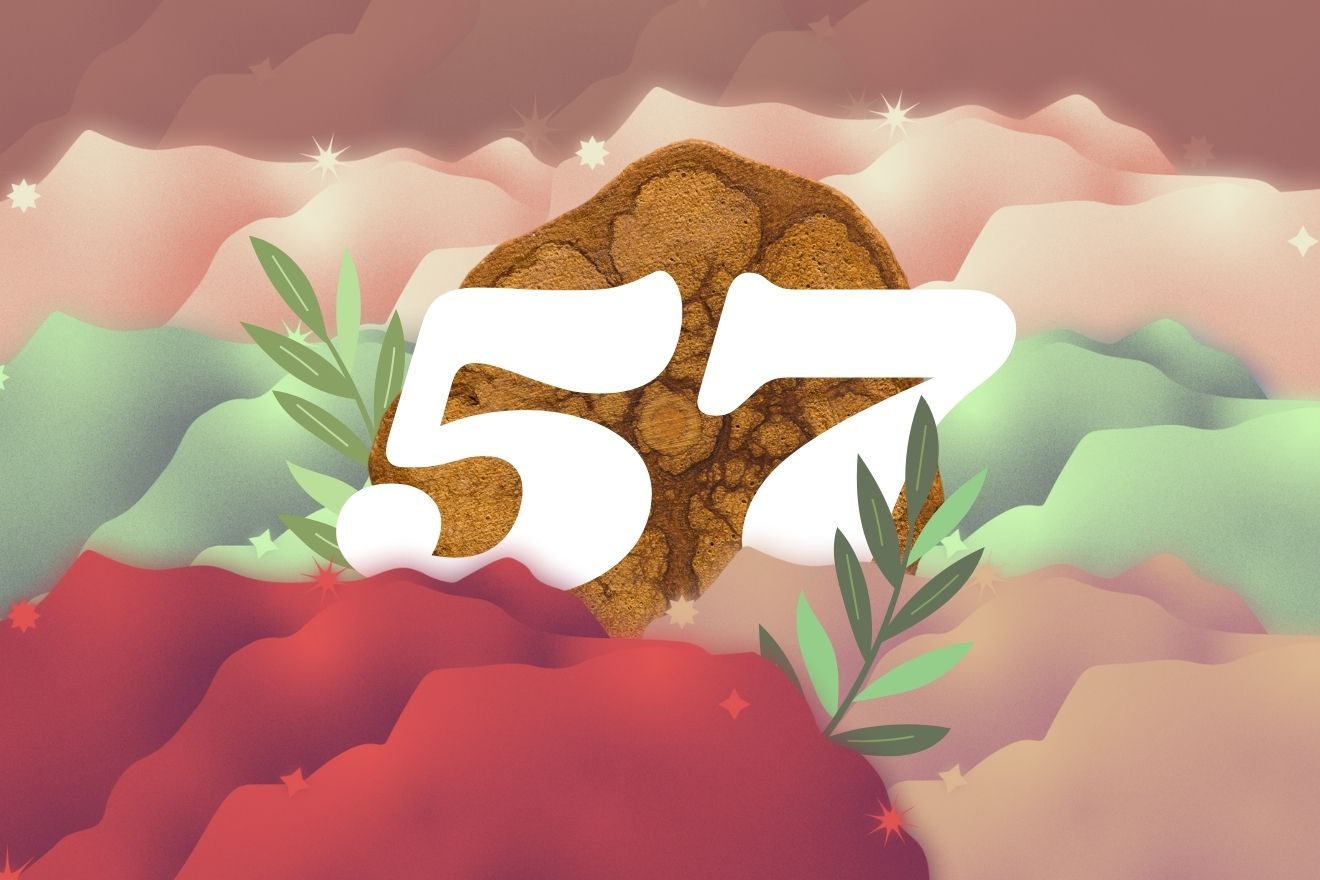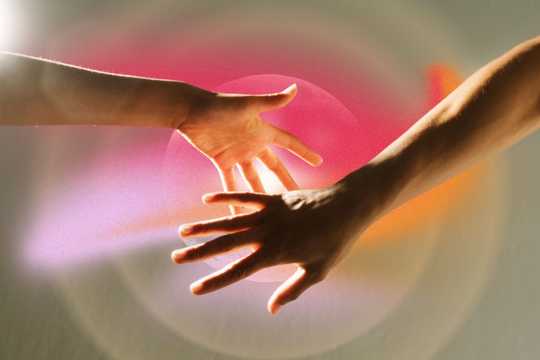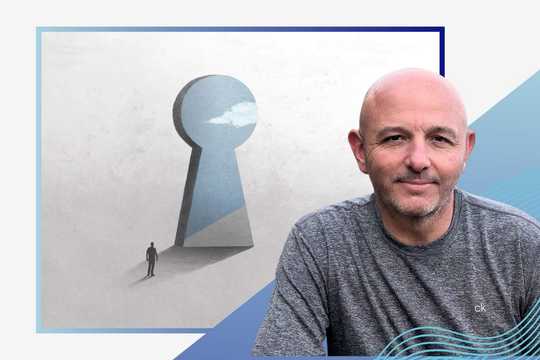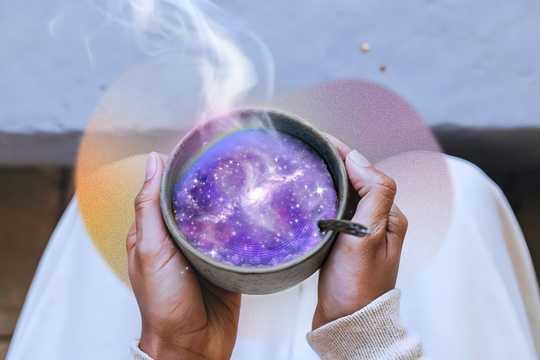Ayahuasca, the ancient Amazonian brew known for its profound psychedelic effects, has captivated spiritual seekers, scientists, and therapists alike. Traditionally used by Indigenous shamans for healing and vision quests, this powerful plant medicine is now at the center of modern discussions on consciousness, mental health, and psychedelic-assisted therapy.
Beyond its mystical reputation and therapeutic potential, ayahuasca has a fascinating history, unique cultural significance, and a surprising scientific profile. Whether you’re a curious mind exploring plant medicines or a therapist interested in its clinical applications, these interesting and fun facts about ayahuasca will deepen your understanding of this sacred brew.
Basic Facts About Ayahuasca
Here are some essential facts you may not know about ayahuasca:
The Origins and Composition of Ayahuasca
- Indigenous communities in the Amazon basin, particularly in Peru, Ecuador, Colombia, and Brazil, have used ayahuasca for thousands of years in spiritual and healing ceremonies.
- The name “Ayahuasca” comes from the Quechua language, where aya means “spirit” or “dead body” and huasca means “vine.” Thus, people call it the “Vine of the Dead.”
- Experts classify ayahuasca as an entheogenic compound, meaning people traditionally use it to induce spiritual or mystical experiences.
- People make ayahuasca by combining at least two key plants, most commonly the Banisteriopsis caapi vine and the Psychotria viridis shrub. Together, these plants create the psychoactive effects.
- The Banisteriopsis caapi vine contains monoamine oxidase inhibitors (MAOIs). They prevent the breakdown of DMT in the digestive system, allowing its psychoactive effects to take hold.
- Ayahuasca contains both DMT, a classical psychedelic, and β-carbolines like harmine and harmaline, which inhibit enzymes in the gut to make DMT orally active.
- Some ayahuasca brews include other plants like Diplopterys cabrerana, which also contains high levels of DMT.
- The brew contains DMT, a powerful compound sometimes called the “God molecule” due to its intense visionary and mystical properties.
Follow your Curiosity
Sign up to receive our free psychedelic courses, 45 page eBook, and special offers delivered to your inbox.The Spiritual and Ceremonial Use of Ayahuasca
- Many people who work with ayahuasca believe its name reflects its profound spiritual nature. They often describe experiences of death, rebirth, and profound transformation.
- Some Indigenous traditions believe ayahuasca facilitates communication with spirits, ancestors, or plant teachers, making it a key tool in shamanic practices.
- Ayahuasca ceremonies typically last overnight, with the central psychedelic experience lasting about four to eight hours. This period is followed by a gradual return to baseline consciousness.
- The effects of ayahuasca begin within 20 to 30 minutes. They often start with purging, followed by an intense peak experience before slowly tapering off.
- Different Indigenous groups across the Amazon have their own unique ayahuasca rituals, chants, and ceremonial structures that reflect their distinct cultural and spiritual beliefs.
Brain Facts About Ayahuasca
Here are some facts that describe what ayahuasca does to the brain:
- Ayahuasca allows DMT to reach the brain by preventing its breakdown in the gut, enabling it to cross the blood-brain barrier and activate receptors that induce psychedelic effects.
- DMT primarily stimulates serotonin 2A (5-HT2A) receptors, which alters perception, enhances visual imagery, and heightens emotional awareness.
- Ayahuasca affects multiple neurotransmitter systems, including serotonin, dopamine, and noradrenaline, influencing cognition, emotion, and sensory processing.
- The ayahuasca brew increases neurohormone levels, which may contribute to its physiological and psychological effects. Examples of these are prolactin, growth hormone, cortisol, and β-endorphin.
- β-carbolines in ayahuasca promote neuroplasticity and reduce inflammation, potentially supporting long-term cognitive and emotional benefits.
Facts About the Effects of Ayahuasca
- The effects of ayahuasca can last between 4 to 8 hours, depending on the preparation, dosage, and individual metabolism.
- Ayahuasca triggers a strong physical purge, commonly referred to as the “ayahuasca purge.” It often includes vomiting, sweating, shaking, crying, and bowel movements, helping participants release emotional and physical tension.
- Many people view purging as cleansing. They believe it clears both the body and mind, leading to a sense of relief, clarity, and transformation.
- Ayahuasca affects the gastrointestinal system, frequently causing nausea, diarrhea, stomach cramping, and discomfort as part of its intense bodily effects.
- The brew alters sensory perception and neurological responses, leading to visual hallucinations, heightened auditory sensitivity, dizziness, and dilated pupils.
- Ayahuasca impacts the cardiovascular and autonomic nervous systems. As a result, it causes changes in heart rate, blood pressure fluctuations, chills, sweating, and shifts in breathing patterns.
- Ayahuasca can cause intense psychological distress, leading to anxiety, panic attacks, confusion, or disorientation, particularly in unsupervised or poorly facilitated settings.
- Ayahuasca can enhance emotional well-being, thereby increasing happiness, self-awareness, and empathy while deepening sensory perception and intensifying emotions.
- The ayahuasca experience often boosts creativity and introspection. It helps individuals gain insights into their thoughts, behaviors, and life purpose, especially when taken with a clear intention in a supportive setting.
Preparing for an Ayahuasca Experience
- A traditional ayahuasca preparation diet, known as a “dieta,” helps cleanse the body, mind, and spirit by restricting certain foods, activities, and distractions before the ceremony.
- The dieta advises participants to avoid foods high in tyramine, such as aged cheese, alcohol, soy products, and dried fruit, since ayahuasca inhibits stomach enzymes, which can lead to adverse reactions.
- Many ayahuasca diets limit salt, sugar, caffeine, chocolate, red meat, and processed foods. Instead, they encourage hydration and the consumption of organic foods and lean proteins like fish, chicken, and eggs.
- Fasting for at least four hours before drinking ayahuasca is often recommended to support a smoother physical experience and minimize digestive discomfort.
Learn More About How Ayahuasca Works
- Explore the Differences Between DMT and Ayahuasca
- Understand Why People Feel Worse After Drinking Ayahuasca
- Read Our Ayahuasca Substance Guide
- Inform Yourself with The Ultimate Ayahuasca Guide: Your Top 7 Questions Answered
Historical, Cultural, and Legal Facts About Ayahuasca
Explore the history and cultural significance of ayahuasca with these facts.
- Over 70 Indigenous groups in the Amazon basin have used ayahuasca for centuries, incorporating it into spiritual and medicinal rituals in regions like Peru, Brazil, Colombia, and Ecuador.
- The earliest evidence of ayahuasca use dates back to 1500–2000 BCE in the northeastern Amazon, though its true origins likely stretch even further into the past.
- Manuel Villavicencio documented ayahuasca’s ethnobotanical use in the 1850s, and English botanist Robert Spruce later wrote about its role in the traditions of the Tucano, Guahibo, and Záparo cultures.
- Ayahuasca plays a key role in shamanic traditions, where experienced healers, known as ayahuasqueros or curanderos, guide participants through ceremonies using sacred songs called Icaros and traditional instruments.
- Brazilian syncretic religions, such as Santo Daime and União do Vegetal (UDV), have incorporated ayahuasca into their spiritual practices since the early 20th century. These religions blend Indigenous traditions with Christian and Afro-Brazilian influences.
Ayahuasca Traditions
As ayahuasca has spread globally, new non-traditional practices have emerged, often incorporating Indigenous elements but adapting them to urban and modern spiritual settings. Here are some of the traditions associated with ayahuasca:
- Mestizo shamans have developed their own ayahuasca traditions, blending Indigenous practices with non-Indigenous influences to create unique ceremonial rituals.
- The Shipibo-Conibo people of the Peruvian Amazon use ayahuasca in ceremonies guided by Icaros, sacred songs that direct the experience and channel the medicine’s energy throughout the ceremonial space.
- The Shuar people of Ecuador and Peru traditionally use a vine species called Ayahuasca de la Muerte (Ayahuasca of Death), believing it facilitates healing, divination, and communication with spirits.
- The Siona people of Colombia conduct ayahuasca ceremonies led by a medicine man or woman. They incorporate specific songs and rituals to shape the experience.
- The Tukano people in the northwest Amazon refer to ayahuasca as yagé. They often mix the Banisteriopsis caapi vine with other plants and rely on a trained medicine person to guide them on their journey.
- Vegetalismo is a syncretic ayahuasca tradition merging Indigenous spiritual practices with Western esoteric influences to create an evolving approach to healing and ceremony.
- Reciprocity has become a key discussion point in ayahuasca use, with many Western participants striving to honor Indigenous traditions and avoid exploitative colonial patterns.
Legal Facts About Ayahuasca
- Ayahuasca is illegal in many countries, including the U.S., because it contains DMT, a Schedule I substance.
- Some countries, like Brazil, Bolivia, and Peru, allow ayahuasca for religious or cultural ceremonies, recognizing its spiritual significance.
- While most of Europe bans ayahuasca, Portugal has decriminalized it, and some religious groups in other nations have obtained legal exemptions.
Learn More About the History and Legal Status of Ayahuasca
- Broaden Your Perspective About Ayahuasca Traditions and Origins
- Delve Deeper into Heart Medicine — Teachings from the Mother Ayahuasca
- Become Knowledgable About Ayahuasca Ceremony Etiquette: What to Expect During an Ayahuasca Ceremony
Psychotherapeutic Facts About Ayahuasca
Many research studies are looking at the therapeutic potential of ayahuasca. Here are some facts about the healing powers of ayahuasca:
Depression
- Ayahuasca may rapidly reduce symptoms of depression, with some studies showing significant mood improvements within hours or days due to its impact on serotonin receptors and neuroplasticity.
- β-carbolines in ayahuasca promote the growth of new neural connections, which may help rewire negative thought patterns associated with depression.
- Unlike traditional antidepressants, ayahuasca provides an introspective experience, allowing individuals to confront unresolved emotional pain and gain new perspectives on their struggles.
Anxiety
- Ayahuasca’s effects on serotonin receptors may help regulate mood and reduce excessive worry, leading to a lasting reduction in anxiety symptoms.
- The deep, immersive experience often allows individuals to process fears and past traumas, helping them develop a greater sense of emotional resilience.
- Many participants report long-term relief from anxiety, possibly due to increased mindfulness, self-awareness, and the sense of connection fostered by the experience.
Post-Traumatic Stress Disorder (PTSD)
- Ayahuasca can help individuals process and reframe traumatic memories, allowing them to integrate past experiences rather than remain trapped in distressing emotional loops.
- Neuroplastic effects of ayahuasca may repair brain regions affected by PTSD, such as the amygdala and prefrontal cortex, improving emotional regulation and reducing hypervigilance.
- Some people who have PTSD report a deep sense of emotional release and healing, often describing their ayahuasca experiences as pivotal moments in their recovery journey.
Substance Dependence
- Ayahuasca therapy has shown promise in helping individuals confront the root causes of their substance use and develop healthier coping mechanisms.
- The introspective nature of ayahuasca can foster a sense of self-compassion and purpose, reducing cravings and the desire to engage in self-destructive behaviors.
- Research suggests that ayahuasca may reset reward pathways in the brain, reducing compulsive drug-seeking behaviors and enhancing motivation for long-term recovery.
Learn More About the Healing Powers of Ayahuasca
- Discover Trauma Healing with Ayahuasca
- Gain Knowledge About Emotional Healing with Ayahuasca
- Read How to Change Your Core Beliefs With Ayahuasca
Ayahuasca is more than just a psychedelic brew — it is a powerful tool for healing, transformation, and self-discovery. From its deep roots in Indigenous traditions to its growing role in modern psychotherapy, ayahuasca continues to captivate curious minds and professionals alike.
Whether you’re exploring its cultural significance, scientific effects, or therapeutic potential, understanding this sacred plant medicine is essential for safe and meaningful experiences.
If you’re ready to deepen your knowledge, we invite you to explore Psychedelic Support’s free courses and professional and public training programs. Learn from experts, gain valuable insights, and prepare to engage responsibly and in an informed way with ayahuasca.
References
Almeida, C. A. F., Pereira-Junior, A. A., Rangel, J. G., Pereira, B. P., Costa, K. C. M., Bruno, V., Silveira, G. O., Ceron, C. S., Yonamine, M., Camarini, R., Garcia, R. C. T., Marcourakis, T., & Torres, L. H. (2021). Ayahuasca, a Psychedelic Beverage, Modulates Neuroplasticity Induced by Ethanol in Mice. Behavioural Brain Research, 416, 113546. https://doi.org/10.1016/j.bbr.2021.113546.
Loizaga-Velder, A., & Verres, R. (2014). Therapeutic Effects of Ritual Ayahuasca Use in the Treatment of Substance Dependence — Qualitative Results. Journal of Psychoactive Drugs, 46(1), 63–72. https://doi.org/10.1080/02791072.2013.873157.
Maia, L. O., Daldegan-Bueno, D., Wießner, I., Araujo, D. B., & Tófoli, L. F. (2022). Ayahuasca’s Therapeutic Potential: What We Know – and What Not. European Neuropsychopharmacology, 66, 45–61. https://doi.org/10.1016/j.euroneuro.2022.10.008.
Palhano-Fontes, F., Barreto, D., Onias, H., Andrade, K. C., Novaes, M. M., Pessoa, J. A., Mota-Rolim, S. A., Osório, F. L., Sanches, R., dos Santos, R. G., Tófoli, L. F., de Oliveira Silveira, G., Yonamine, M., Riba, J., Santos, F. R., Silva-Junior, A. A., Alchieri, J. C., Galvão-Coelho, N. L., Lobão-Soares, B., Hallak, J. E. C., Arcoverde, E., Maia-de-Oliveira, J. P. & Araújo, D. B. (2018). Rapid Antidepressant Effects of the Psychedelic Ayahuasca in Treatment-Resistant Depression: a Randomized Placebo-Controlled Trial. Psychological Medicine, 49(4), 655–663. https://doi.org/10.1017/s0033291718001356.
Sheth, R., Parikh, E., Olayeye, K., Pfeifer, K., & Khanna, D. (2024). The Effects of Ayahuasca on Psychological Disorders: A Systematic Literature Review. Cureus, 16(3), e55574. https://doi.org/10.7759/cureus.55574.
Weiss, B., Dinh-Williams, L. L., Beller, N., Raugh, I. M., Strauss, G. P., & Campbell, W. K. (2023). Ayahuasca in the Treatment of Posttraumatic Stress Disorder: Mixed-Methods Case Series Evaluation in Military Combat Veterans. Psychological Trauma: Theory, Research, Practice, and Policy. https://doi.org/10.1037/tra0001625.






